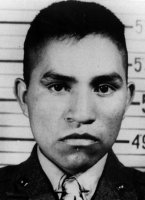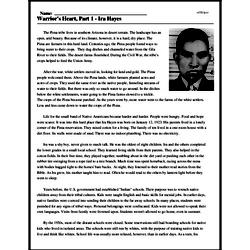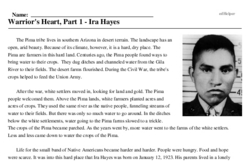Warrior's Heart, Part 1 - Ira Hayes
The Pima tribe lives in southern Arizona in desert terrain. The landscape has an open, arid beauty. Because of its climate, however, it is a hard, dry place. The Pima are farmers in this hard land. Centuries ago, the Pima people found ways to bring water to their crops. They dug ditches and channeled water from the Gila River to their fields. The desert farms flourished. During the Civil War, the tribe's crops helped to feed the Union Army.
After the war, white settlers moved in, looking for land and gold. The Pima people welcomed them. Above the Pima lands, white farmers planted acres and acres of crops. They used the same river as the native people, funneling streams of water to their fields. But there was only so much water to go around. In the ditches below the white settlements, water going to the Pima farms slowed to a trickle. The crops of the Pima became parched. As the years went by, more water went to the farms of the white settlers. Less and less came down to water the crops of the Pima.
Life for the small band of Native Americans became harder and harder. People were hungry. Food and hope were scarce. It was into this hard place that Ira Hayes was born on January 12, 1923. His parents lived in a lonely corner of the Pima reservation. They raised cotton for a living. The family of ten lived in a one-room house with a dirt floor. Its walls were made of mud. There was no indoor plumbing. There was no electricity.



